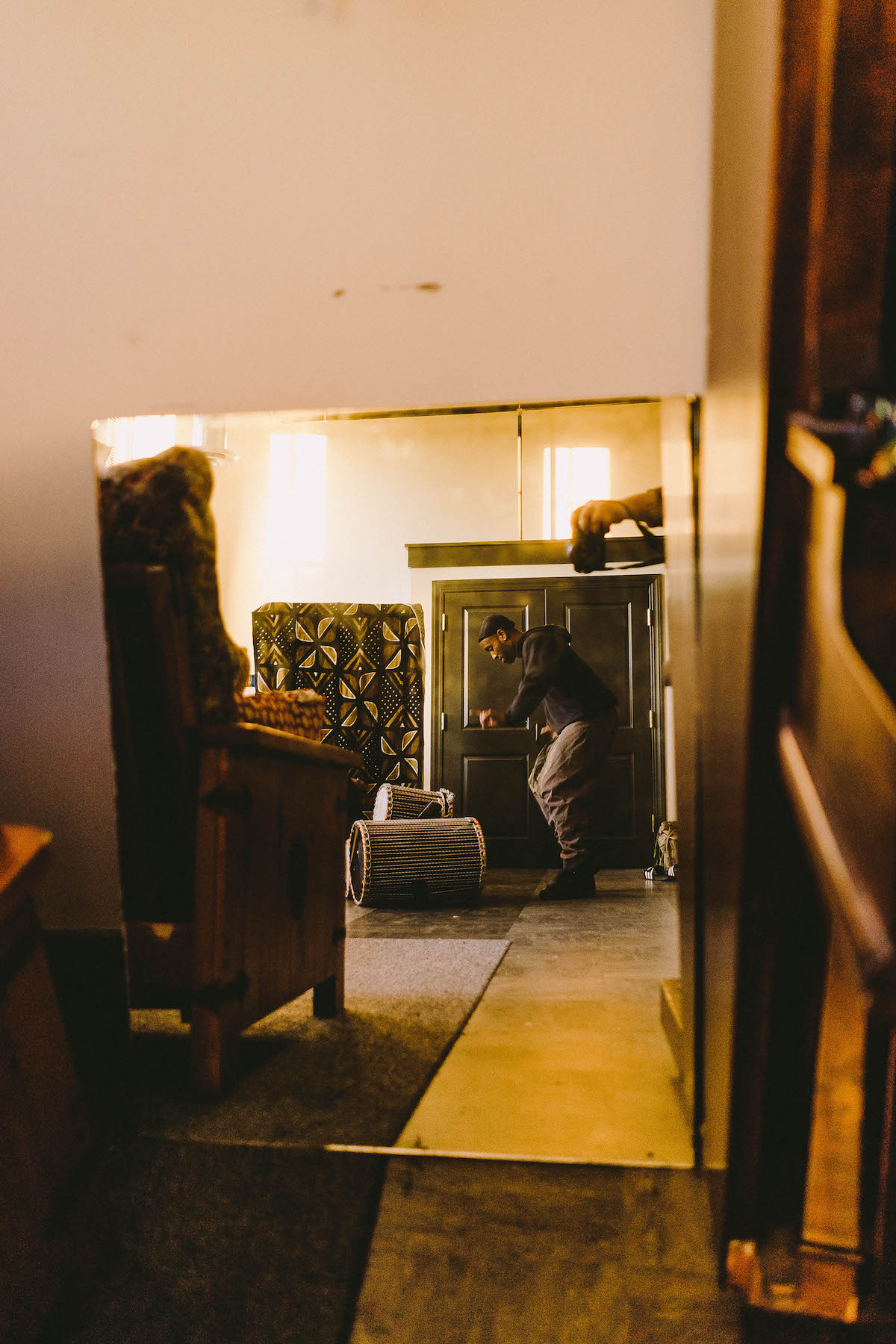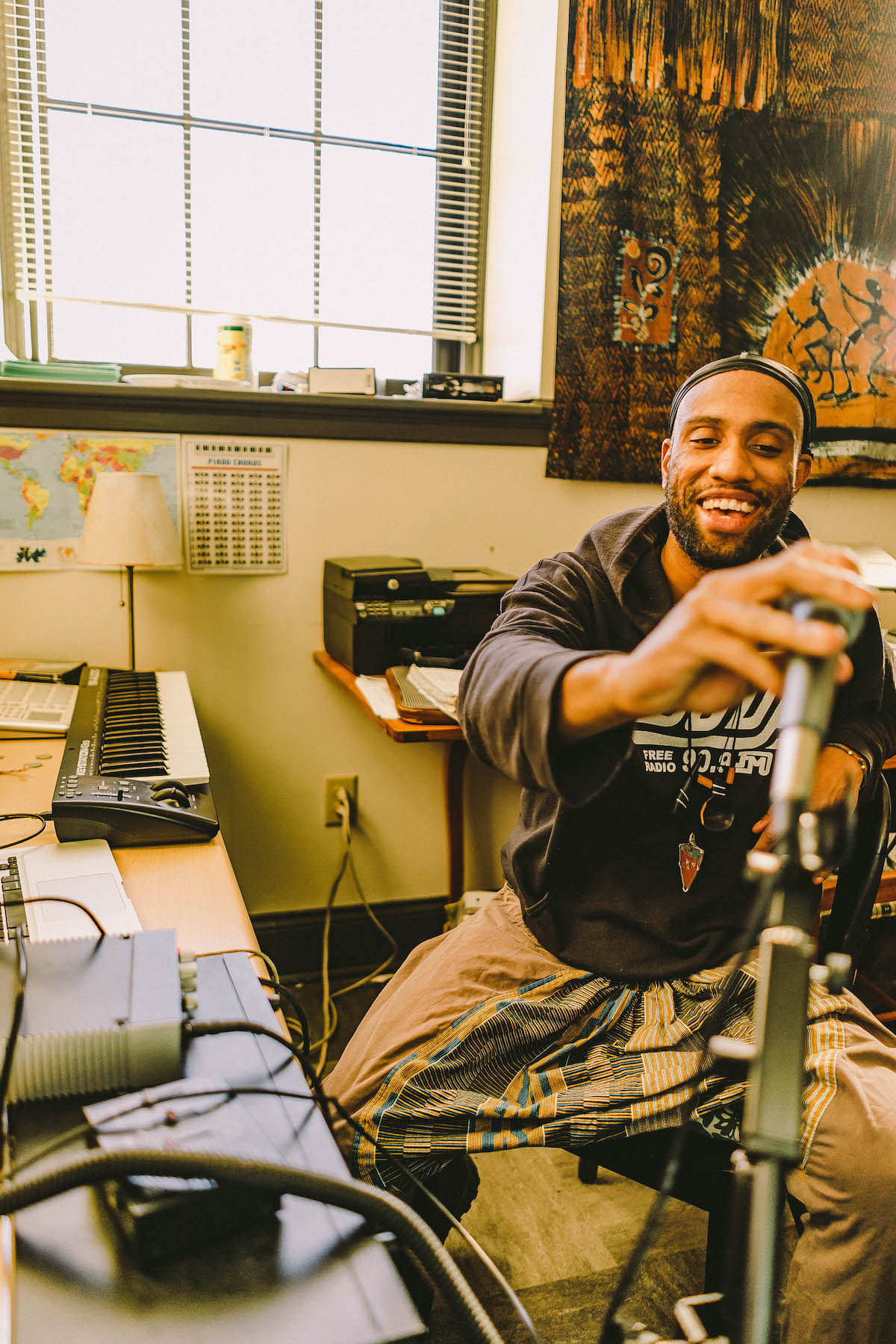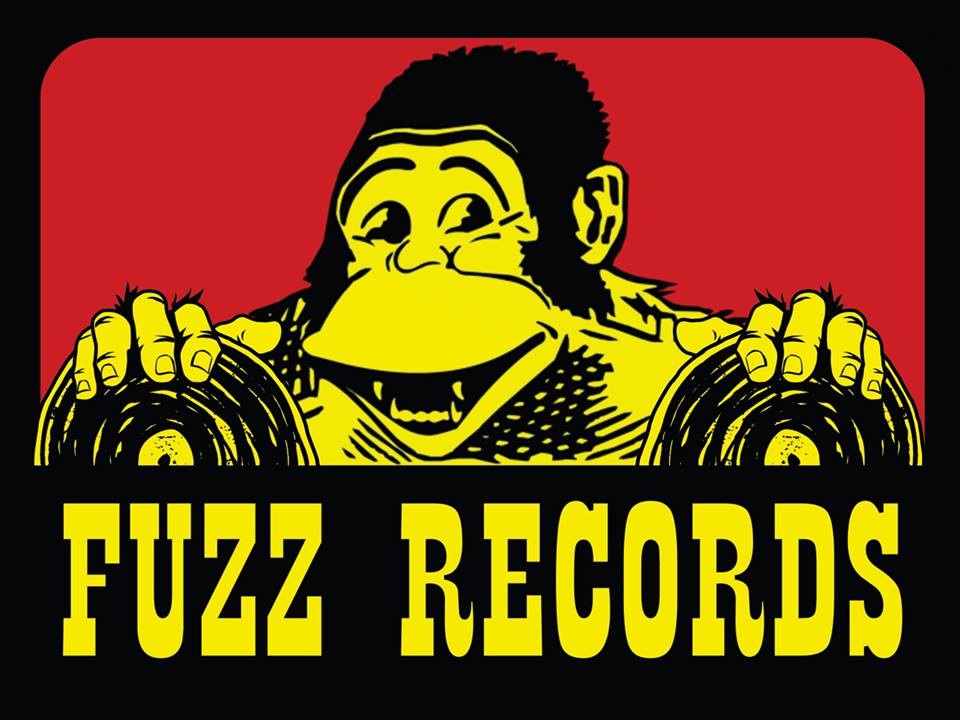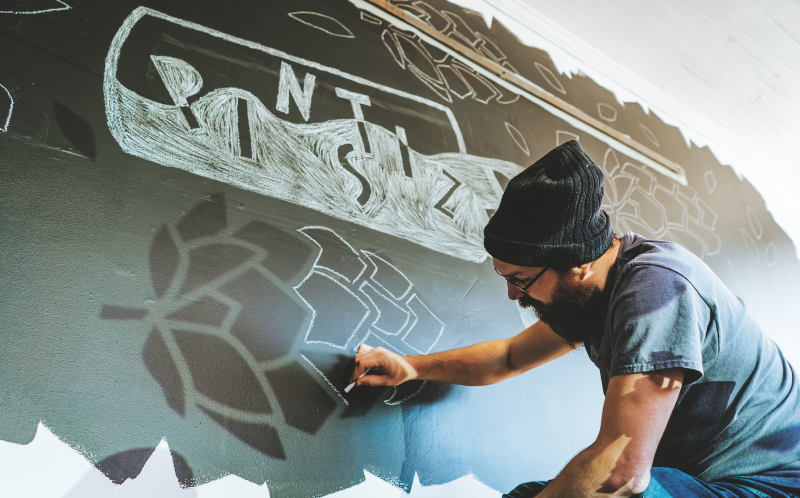Photos: Kiki Vassilakis
“Sometimes I think better when I’m moving,” Jordan Taylor Hill says as he saunters around the main gallery of Albany Barn. The Afrobeat percussionist has lived in the 2nd Street space for almost six years as an artist resident.
Hill was one of the first people to live in the Barn when they opened the Academy Loft apartments for local artists in December 2013. In addition to the central main gallery/program space, the Barn includes work-only studios, rehearsal suites, a dance studio and digital media lab.
The Long Island native came to Albany in 2011 to attend University at Albany and found out about the nonprofit “creative arts incubator” through his Urban Studies and Planning program. He signed up for their email list out of admiration for their community building efforts. When the Barn alerted Hill he had been accepted as a resident, the recent graduate had just finished an internship at Soul Fire Farm in Grafton. The timing was perfect.
“I didn’t want to go back to Long Island, so I came here with a backpack and two bags,” he says.
Hill got lucky. Since opening resident spaces, the Barn has become a coveted haven for artists to live and work. Now there is a waiting list—and for good reason.
The studio and one-room apartments at the Albany Barn Academy Lofts are inhabited by local artists who qualify based on income and artistic efforts. Applicants to the subsidised housing space who earn below or at the limit of $27,200 as a single artist, or $31,100 for two, are chosen by an artist selection committee made up of community members with a role or vested interest in the arts. According to the Barn, this committee chooses possible residents by assessing “the level of commitment the applicant demonstrates to his/her creative work and the applicants’ commitment to community both inside the building and beyond its walls.”

Hill has been writing songs since he was in middle school, gradually experimenting with DJing and recording. At the University at Albany, he spent time on the air of the college radio station WCDB and had the opportunity to study abroad in Senegal for a drum and dance internship. It’s where he was introduced to, and fell in love with, the art forms that gave him the opportunity to pursue a residency at the Barn.
“It helps because music and dance go hand in hand, particularly in West African dance,” he says. “That call-and-response type thing is fun to know as a drummer, you can know exactly where the beat goes in a dance. So many people play drums but they don’t play to people dancing.”

Today, Hill teaches djembe drum and dance classes in the Barn every Monday night. He plays Albany venues like The Low Beat with fellow Barn musicians, teaches several after-school programs four days a week in Albany schools like Arbor Hill Elementary School, Stephen and Harriet Myers Middle School, occasionally dropping in for classes and assemblies. This February, he taught a dance workshop at Albany Leadership Charter High School for Black History Month and in late March, he began a regular drum and dance workshop at the Albany Library Howe Branch.
Hill says the Barn has offered him opportunities to explore his art he wouldn’t have found elsewhere and credits the space and its community as a grounding force that keeps him living and working in the Capital Region. The Barn team helps him find grants and programs. His neighbors are collaborators and inspirations and often help set up gigs in their prospective networks or promote his work through video and photography.
“When I was a kid, I remember dreaming of having my own studio space to work on music and to see how it’s manifested… I’m really grateful for that and I don’t take it for granted by any means,” he says. “Just being here, having teachers come from the Ivory Coast that help me improve as a percussionist or being able to leave my job and travel [back and forth] to Senegal. They’re really supportive.”

As a drummer living in a communal arts space, Hill feels pretty comfortable being able to explore new rhythms and ideas when inspiration hits. He says the artist selection committee takes noise levels into account when choosing applicants and where they would be best situated.
It’s a freedom Hill appreciates in comparison to living at home, in dorms or in friends’ and host’s homes while living abroad, though he has always found a way to make art where he can.
“There were times, especially with drumming, when I was not always able to do that as openly but that would always inspire me, whether I realized it or not, to do more writing—practicing songwriting and poetry. One door closes and another one opens up, it sparks that,” he says.
Because the lofts are subsidised housing in partnership with Albany Housing, Hill has been able to leave his job at the local co-op to focus on his art, knowing he could still afford cost of living.
“For me, it’s about having some type of mobility,” he says. “To be able to go down to the city, to take classes and do shows. Albany is kind of central, so knowing that I can travel to places like Burlington, Boston, D.C., even western New York; it’s a really good spot. Other places are so expensive as well. I think I might like to be in the city, I see some of my friends who are artists there and it’s cool, but my time right now is a lot more valuable to me. [The Barn has] been a great stepping stone for me to not only be very good at my craft but also to make a living.”







Trackbacks/Pingbacks